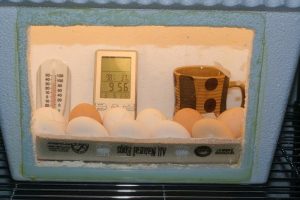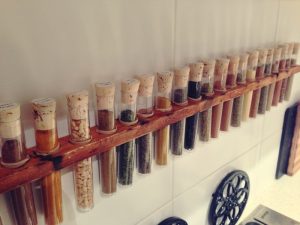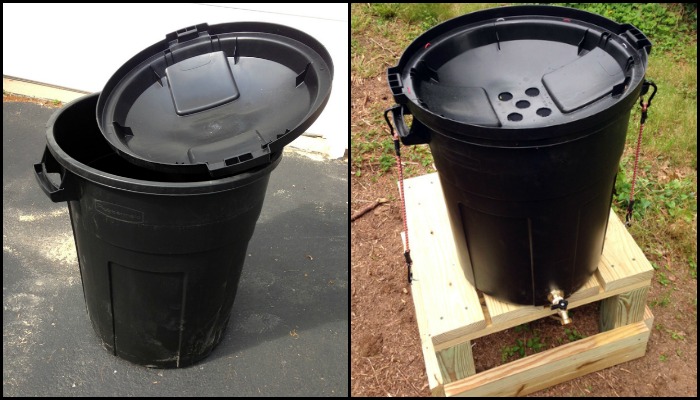
Manually watering your garden using a watering can or hose is an effective but cumbersome method. American households use about 30 to 50 gallons of water every day for outdoor activities such as watering lawns or washing cars.
A rain barrel can save you money on your water bill by collecting rainwater that would otherwise go to waste. This supports water conservation and benefits your plants, as the rainwater collected lacks the harmful salts, chemicals, and minerals found in municipal water.
Considering a simpler way to keep your garden lush? This rain barrel project is a winner. It’s straightforward, quick to set up, and doesn’t tie you down to one spot since it’s a freestanding unit, not shackled to a downspout. This mobility is perfect for adjusting to your yard’s needs or dodging the havoc that severe weather can wreak on fixed structures.
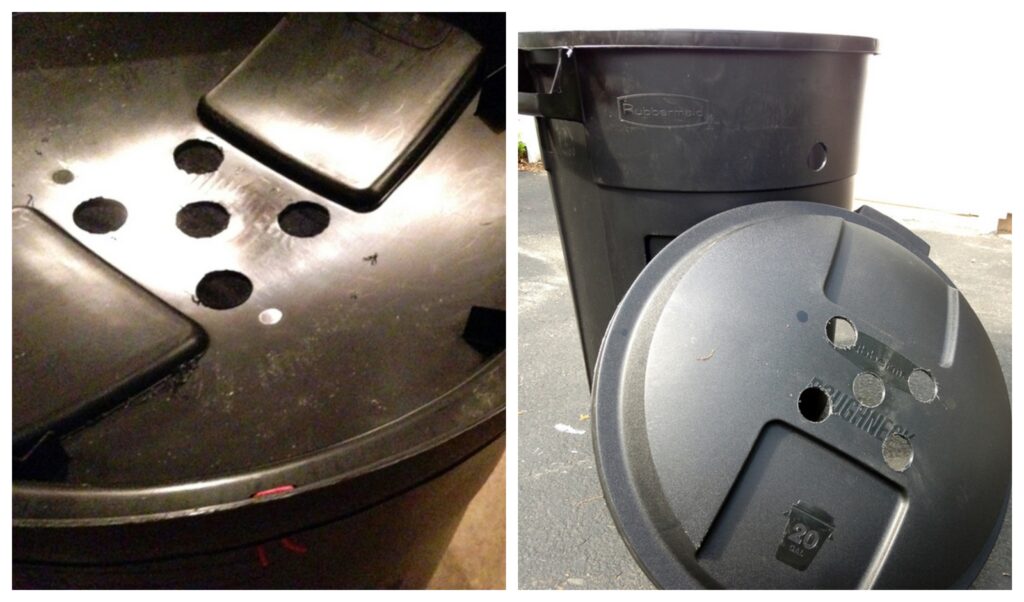
Continue reading to start making your own rain barrel.
Contents
Making a Rain Barrel
Materials
- 20-gallon Garbage Can with Lid
- Mosquito Screen
- Waterproof Duct Tape
- Valve Spigot with Bulkhead Fitting
- Teflon Tape
- Electrical Wire
- Pressure Treated Timber (2×4’s, 2×6’s, and 4×4’s)
- Wood Screws
- 2 Metal Hooks
- 2 Carabiner Style Bungee Cords
Tools
- Measuring Tape
- Drill with Holesaw
- Wrench
- Circular Saw
Instructions
- Prepare the Garbage Can:
- Choose a location for your rain barrel. Ensure it’s near a downspout if you plan to collect roof runoff.
- Using the drill and holesaw attachment, create a hole near the bottom of the garbage can. This is where you’ll install the valve spigot.
- Install the Valve Spigot:
- Wrap the threads of the valve spigot with Teflon tape. This helps create a waterproof seal.
- Insert the spigot into the hole you drilled. Secure it on the inside with the bulkhead fitting. Use the wrench to ensure it’s tightly fastened.
- Prepare the Lid:
- Drill a large hole in the center of the lid. This hole should be big enough to let water in but small enough to keep debris out.
- Cover the hole with mosquito screen to prevent mosquitoes from breeding in the water. Secure the screen with waterproof duct tape.
- Construct the Stand:
- Measure and cut the pressure-treated timber to create a stable stand for your rain barrel. You’ll need four legs (4x4s) and a frame (using 2x4s and 2x6s) that fits the dimensions of your garbage can.
- Assemble the stand using wood screws. Ensure it’s sturdy enough to support the weight of a full rain barrel.
- Place the Rain Barrel:
- Position the garbage can on the stand. Make sure it’s stable and level.
- If you’re not connecting the rain barrel directly to a downspout, place it in an area where it can catch rain efficiently.
- Secure the Lid:
- To keep the lid secure, especially on windy days, attach the two metal hooks to the sides of the garbage can.
- Use electrical wire to create loops that connect the hooks to the carabiner-style bungee cords.
- Stretch the bungee cords over the lid to hold it in place securely.
- Maintenance:
- Regularly check and clean the mosquito screen to ensure unobstructed water flow.
- Drain the rain barrel before the winter to prevent freezing and cracking.
- Enjoy Your Rain Barrel:
- Use the water collected for watering your garden. Remember, this water is not suitable for drinking or cooking.
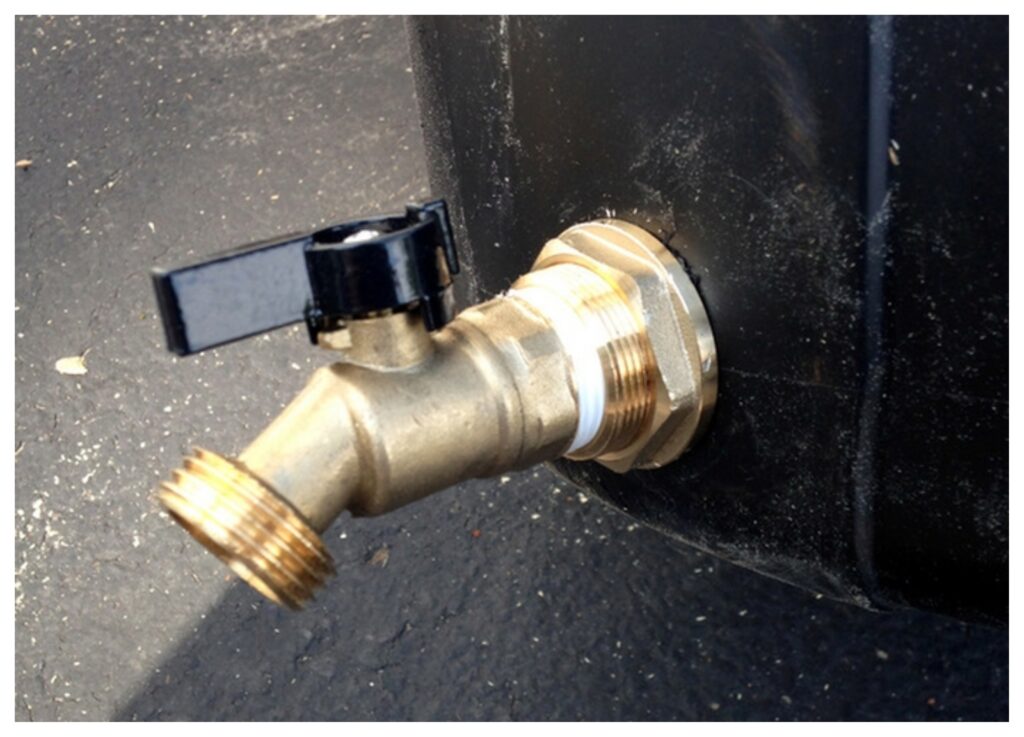
Click on any image to start the lightbox display. Use your Esc key to close the lightbox.![]()
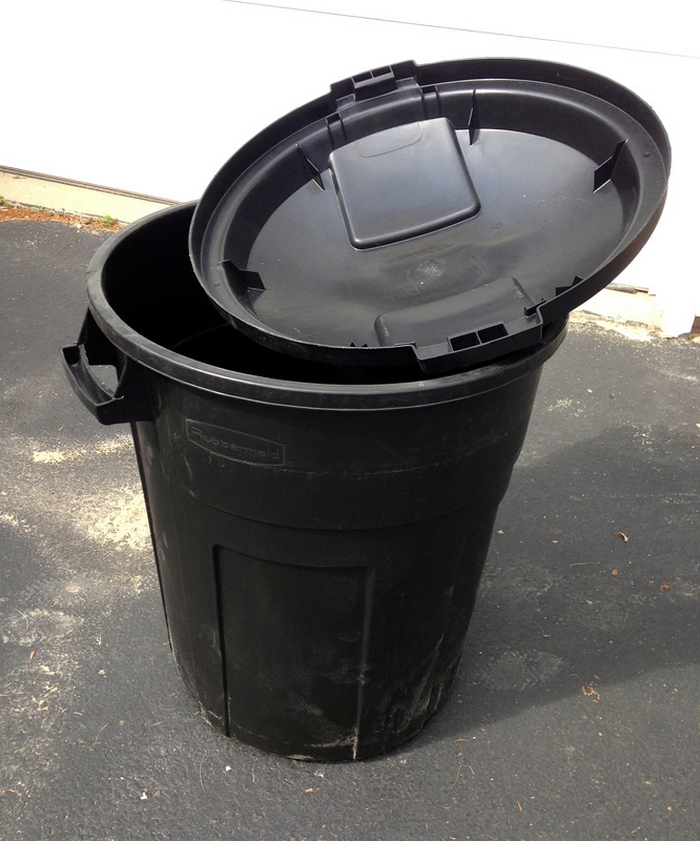
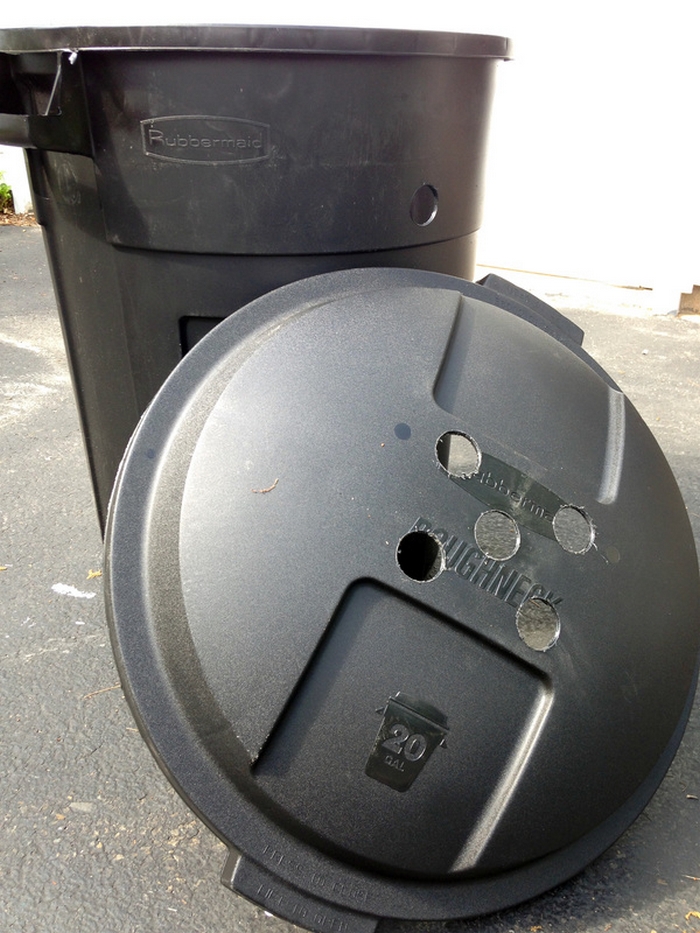
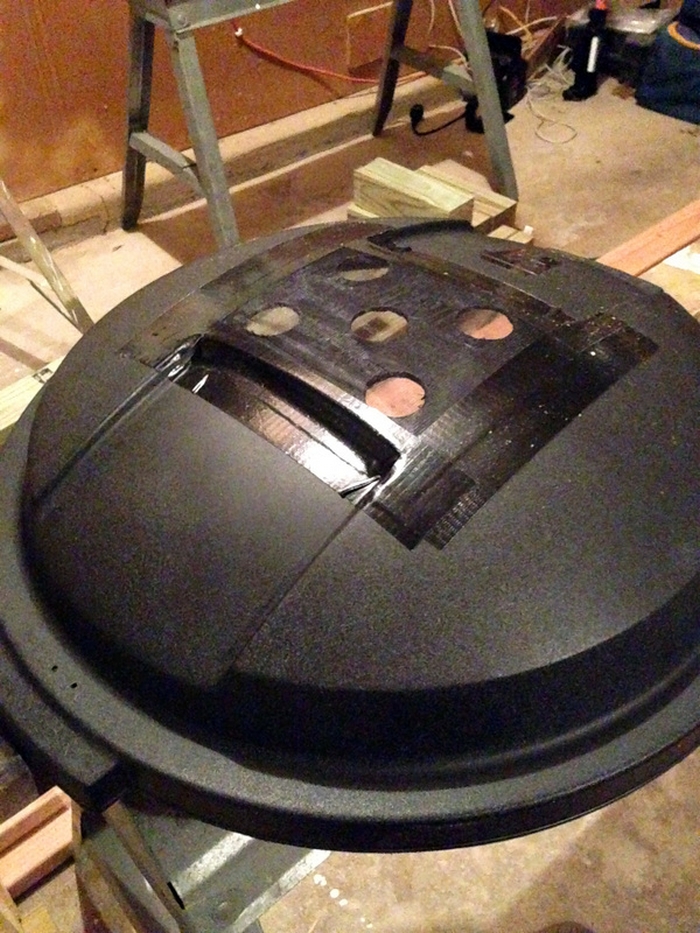
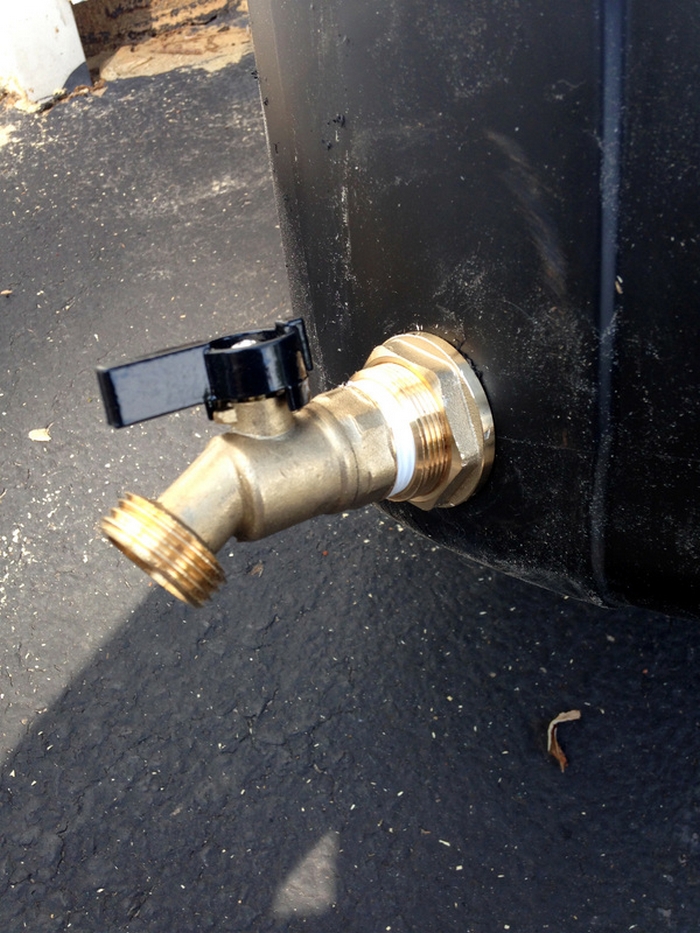
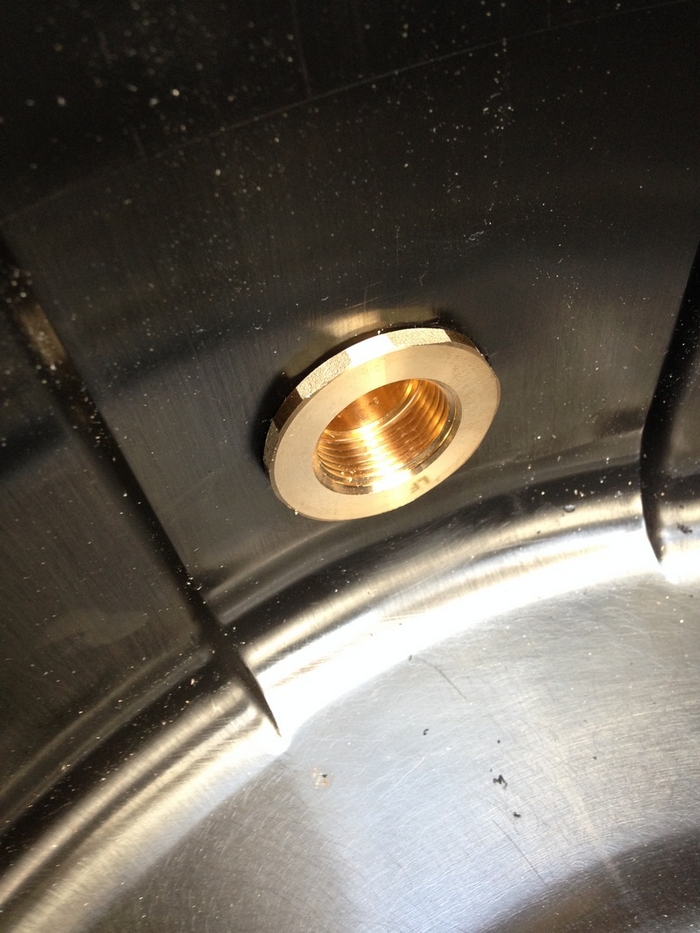
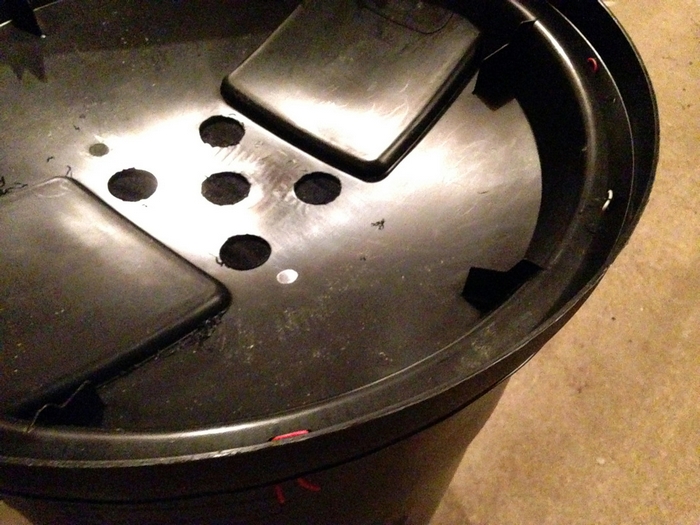
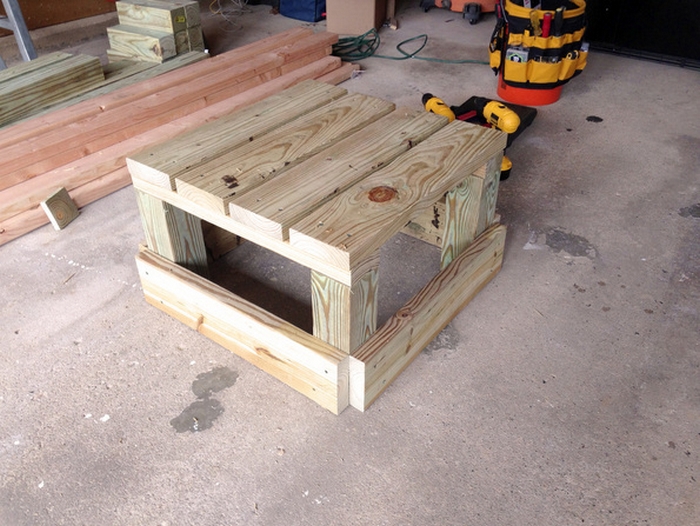
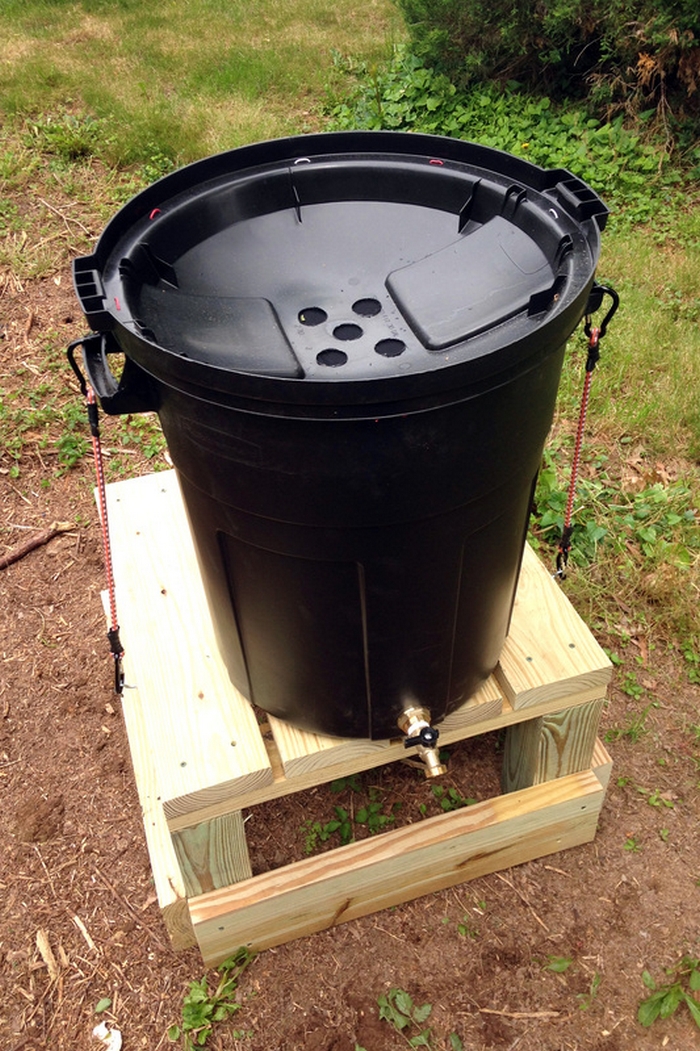
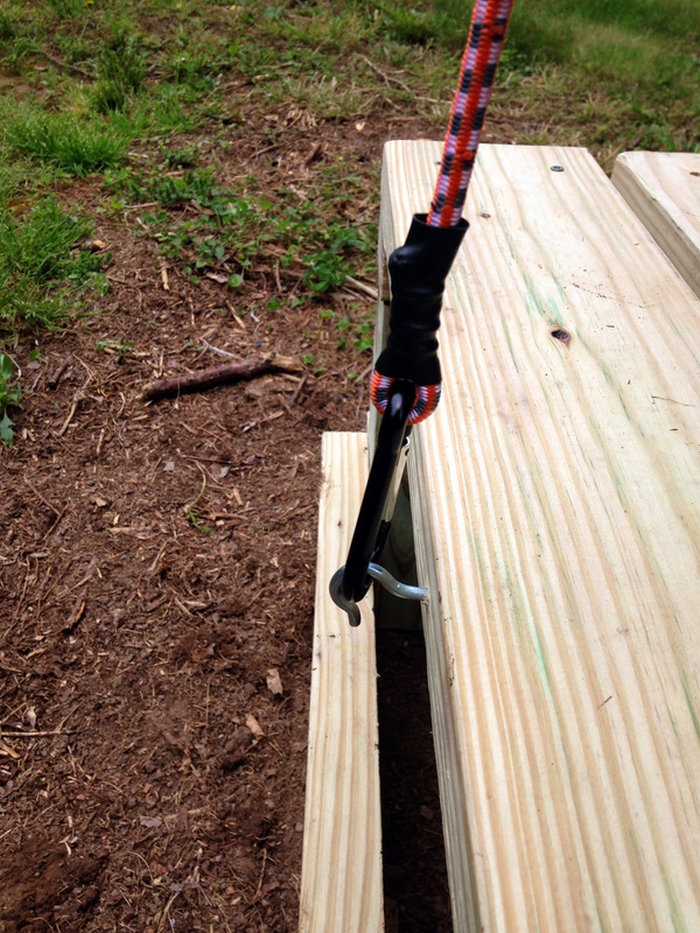
Incorporating Rain Barrels into Landscape Design
Incorporating rain barrels into your landscape design is not just an environmentally friendly practice; it’s a smart water management strategy that can enhance the beauty and functionality of your garden. Beyond their practical benefits, rain barrels can be integrated into your landscape in creative ways, turning them into attractive features that contribute to the overall aesthetic of your outdoor space.
Choose Complementary Materials
Select rain barrels made from materials or finished in colors that complement your existing landscape design. Whether your garden features rustic wooden elements, sleek modern lines, or a cozy cottage vibe, there’s a barrel that can blend seamlessly with your aesthetic.
Decorative Wraps and Paints
Consider using decorative wraps or weather-resistant paints to customize your rain barrel. This not only helps the barrel to fit better with your garden’s theme but also turns it into a piece of art. Whether it’s floral patterns, abstract designs, or a simple color match to your garden’s palette, the possibilities are endless.
Visual Balance
Place rain barrels at key visual points in your garden to create balance. For example, a barrel can serve as a focal point at the end of a garden path or be used to anchor the corner of a flower bed. Think of them as functional sculptures, contributing to the garden’s visual harmony.
Accessibility and Practicality
While aesthetics are important, the practical use of rain barrels should not be compromised. Position them where they can easily collect rainwater from downspouts, yet still be accessible for watering nearby plants. This practical placement ensures that the barrels serve their primary function without disrupting garden activities.
Creating Water Features
With a bit of creativity, rain barrels can be part of water features in your garden. For instance, a rain chain can direct water from a gutter into a barrel, creating a beautiful and soothing water display. Alternatively, a series of barrels can be linked together and positioned to create a cascading water effect.
Support for Wildlife
Incorporate your rain barrel into a wildlife-friendly garden design. Surround it with native plants that attract birds, butterflies, and bees. Consider installing a small drip feature or shallow basin on top of the barrel, providing a safe drinking spot for birds and beneficial insects.
Seating and Storage
Consider customizing your rain barrel with a lid sturdy enough to double as seating for gardens with limited space. This adds a practical element to your garden, providing a place to sit and enjoy your surroundings. Additionally, some barrels come with built-in planters on top, offering a space-saving solution for growing herbs or flowers.
Integrating rain barrels into your landscape design is a practical step towards sustainable gardening. It allows you to conserve water, support local wildlife, and add unique elements to your outdoor space. With thoughtful planning and a bit of creativity, rain barrels can become an integral part of your garden’s design, blending functionality with aesthetic appeal.

Garden Irrigation Solutions
Garden irrigation is essential for the health and growth of your plants, ensuring they receive the right amount of water at the right time. However, traditional watering methods can be time-consuming and sometimes inefficient. By integrating innovative irrigation solutions, you can save time, conserve water, and maintain a lush, vibrant garden with minimal effort.
Here’s how you can utilize your rain barrel for efficient garden irrigation.
Harnessing Rain Barrel Water
A drip irrigation system, when connected to your barrel, can provide a steady, controlled flow of water directly to the roots of your plants. This method minimizes evaporation and runoff, making it one of the most water-efficient ways to nurture your garden.
Setting Up
To set up, connect a hose from the spigot of your barrel to a drip irrigation tubing network laid out across your garden beds. Use a timer to control the flow or manually turn the spigot to begin watering. You might need a pump to increase water pressure for larger gardens.
Easy Installation
Soaker hoses offer a simpler, yet effective, irrigation solution. These porous hoses can be laid out across your garden or buried under mulch to deliver water directly to the soil. Connect a soaker hose to your rain barrel for a gravity-fed, gentle watering system on plants and soil.
Efficient Watering
This method is particularly useful for maintaining consistent soil moisture with minimal water waste. It’s ideal for vegetable gardens, flower beds, and newly planted trees or shrubs.
Utilizing Technology
Automated watering systems can be connected to rain barrels for those looking to combine efficiency with convenience. These systems can be programmed to water your garden at specific times, ensuring regular watering without the need for manual intervention.
Components
Incorporate a solar-powered pump to move water from the barrel through the irrigation system. Add a timer and moisture sensors to further optimize watering schedules based on the actual needs of your plants, reducing water waste and promoting healthy plant growth.
Targeted Watering
Watering rings and drippers are excellent for precise watering around specific plants, particularly for young trees, shrubs, and perennials. By delivering water directly to the base of each plant, you ensure that water goes exactly where it’s needed, promoting deep root growth and healthy development.
Installation Tips
Connect these devices to the hose coming from your barrel. Adjustable drippers allow you to control the flow rate, catering to the needs of individual plants or groups of plants with similar water requirements.
Strategic Placement
To maximize efficiency, place your barrel in a central location within your garden or near areas that require the most watering. This reduces the need for long hoses and ensures easy access to your water source.
Regular Maintenance
Keep your rain barrel and irrigation system in top condition by regularly cleaning filters, checking for leaks, and ensuring the barrel is debris-free. This ensures a consistent water flow and extends the life of your irrigation setup.
By integrating these garden irrigation solutions with a rain barrel, you make your gardening practices more sustainable and enjoy a healthier, more vibrant garden with less effort and water waste.
Conclusion
Creating a rain barrel is a straightforward and rewarding project that significantly enhances your garden’s sustainability. It allows for the efficient use of rainwater, reducing reliance on municipal water and lowering water bills. With a little effort and some basic materials, anyone can contribute to water conservation and enjoy the benefits of a greener, more eco-friendly garden.
We have more money-saving projects for your garden. Check out our plastic barrel planter guide next!




